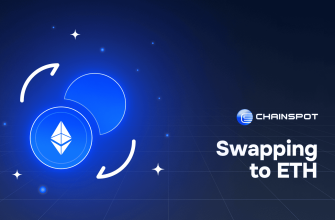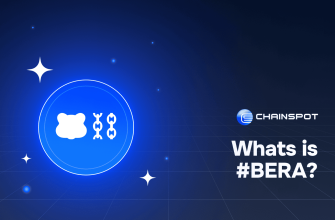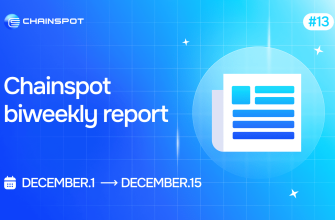Metis, the Ethereum Layer 2 platform experiencing rapid growth, has partnered with Chainlink to establish cross-chain interoperability and embrace the expanding staking landscape.
The future of Metis is BRIGHT🌿
📣 Strategic partnerships with @Chainlink, @eigenlayer, @RenzoProtocol & @DeFiKingdoms enabling Metis to become a superfluid, self-sustainable blockchain.
MarchDrop, a major user rewards milestone for on-chain activities.https://t.co/8xe83qjA2Y pic.twitter.com/qPxGCjAEel
— Metis🌿 (@MetisL2) February 29, 2024
Announced on February 29, Metis has incorporated Chainlink’s cross-chain interoperability protocol (CCIP) as its primary token bridge infrastructure.
The integration will equip the Metis bridge interface with CCIP support, facilitating multi-chain utilities for the network. Initially, Metis will prioritize bridging prominent stablecoins from the Ethereum mainnet, such as Ethena Labs’ eUSD token.
The vision starts with @Chainlink CCIP.
Metis will be integrating Chainlink CCIP as its canonical token bridge infrastructure for new tokens, reducing entry barriers for users, enabling seamless accessibility from multiple blockchains while being secured by Chainlink. pic.twitter.com/FRiaJpGk9A
— Metis🌿 (@MetisL2) February 29, 2024
This integration aims to significantly reduce transfer delays from Metis to Ethereum, cutting the timeframe from seven days to mere “minutes,” while also enabling programmable token transfers.
Metis stated:
“Metis will integrate Chainlink’s Cross-Chain Interoperability Protocol (CCIP), which will soon take over as the canonical bridge for Metis.
This integration will:
- Incorporate Chainlink’s best-in-the-industry security
- Offer an alternative to the seven-day withdrawal period for Optimistic Rollups
- Provide DApps with a wide array of advanced capabilities
Additionally, CCIP coming to Metis will significantly boost liquidity by simplifying asset transfers across numerous blockchains. This will significantly reduce barriers to entry and improve the overall liquidity of the ecosystem.”
Chainlink’s CCIP has already facilitated the transfer of over $9.7 billion worth of value, with its Risk Management Network ensuring the monitoring of cross-chain transactions for malicious activity.
This announcement comes amidst Metis’ remarkable growth, with its total value locked (TVL) surging over 800% to $921 million from $100 million in mid-December. Concurrently, the price of its native METIS token has soared by 354% to $113.5 over the same period.
Metis’ CCIP integration sets the stage for the network to facilitate restaking, with EigenLayer, a pioneering Ethereum restaking protocol, slated to introduce support for Metis in the coming months.
The next building block will be @eigenlayer.
Metis will be moving to Eigen's DA after sequencer decentralization, and incorporating Liquid Restaking Tokens.
This will ensure low fees and create a new liquidity layer, fostering deeper use cases for METIS & ETH on the ecosystem. pic.twitter.com/Dw1SkAiFJY
— Metis🌿 (@MetisL2) February 29, 2024
EigenLayer enables Ethereum stakers to earn additional yields by securing third-party Actively Validated Services (AVSs) while validating the Ethereum mainnet, a process known as restaking. EigenLayer currently boasts a TVL of $9.8 billion, ranking it as the third-largest DeFi protocol.
Metis announced:
“Metis will be one of the first chains to run on EigenLayer Data Availability. EigenLayer Data Availability will enable Metis to offer low transaction costs and fast transactions, even after the imminent release of the Decentralized Sequencer.
That’s not all. EigenLayer’s arrival will add an extra liquidity layer to the ecosystem, creating a powerful and innovative dual-staking architecture for the Metis network. The introduction of Liquidity Relay Tokens (LRTs) has generated a lot of interest in the crypto community. EigenLayer’s integration is expected to increase liquidity and enable deeper use cases for both METIS and ETH, fueling both dual-staking…”
Furthermore, Metis revealed an upcoming collaboration with Renzo Finance to introduce native staking on the Metis network.
Next in this vision goes @RenzoProtocol.
Thanks to @Connext, Renzo will enhance the Liquid Restaking Token (LRT) landscape on Metis, enabling seamless transfers of these from all Renzo-integrated chains to Metis. This will be a key addition to the new layer of liquidity. pic.twitter.com/ZZrtHgJynL
— Metis🌿 (@MetisL2) February 29, 2024
EigenLayer users will have the option to deposit liquid staking tokens to its capped pools or deposit natively staked Ether without limit. Liquid restaking token (LRT) protocols offer users exposure to native restaking through LRTs, allowing tokenholders to access restaking yields without locking up their assets. LRT holders can also utilize their tokens in DeFi or trade them to circumvent restaking withdrawal delays.
Metis users will be able to deposit ETH to Renzo via the forthcoming Restake From Anywhere module from Connext, a cross-chain interoperability protocol, and receive Renzo’s LST, ezETH.












